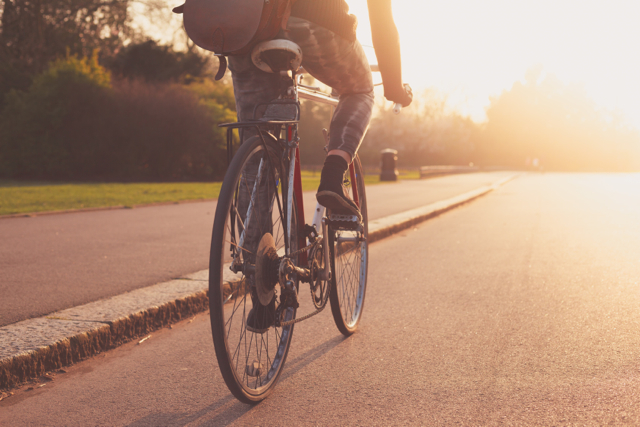
Louisiana Bicycle Laws
People all over Louisiana enjoy riding bicycles, both as a means of transportation and for exercise. In recent years, millions of dollars have been spent to install bike paths and bike lanes around Louisiana. These improvements have done a great deal to make the roads safer for cyclists.
The Louisiana bicycle laws further contribute to a safe environment for bike riders. So, if you’re going to ride your bike in New Orleans or anywhere in Louisiana, it is important to understand what the Louisiana bicycle laws require you to do and how they protect you.
Knowing these five things will help you stay safe and aware of your rights and responsibilities when on the road:
1. Know the Correct Arm and Hand Signals
Bicycle riders must be aware of the proper hand and arm signals to alert other drivers to changes in their movement.
The law specifies the signals that should be used in different situations:
- Turning Left: extend your left hand and arm horizontally, open your hand, and face the back of your hand to the rear. La. R.S. 32:106(A)(1).
- Turning Right: extend your hand and arm (right or left) upward at a 45-degree angle, open your hand, and face the back of your hand to the rear. You can also extend your right hand and arm horizontally, open your hand, and face the back of your hand to the rear. La. R.S. 32:106(A)(2).
- Stopping/Slowing Down: extend your hand and arm downward at a 45-degree angle, open your hand, and face the back of your hand to the rear. La. R.S. 32:106(A)(3).
- Pulling from Curb or Side of Highway: same as turning left. La. R.S. 32:106(A)(4).
You don’t have to continuously give the signal if you need your hand or arm to control your bike. La. R.S. 32:106(B).
2. Make Sure You Have the Proper Equipment
Every bike, regardless of when it is used, must have brakes that are strong enough to make the bike skid on dry, level, clean pavement. La. R.S. 32:346.
If you’re going to ride your bike in conditions with poor visibility (such as at nighttime or in rain, fog, or tunnels), you must also have:
- A lamp mounted on the front of the bike emitting a white light visible for up to 500 feet (La. R.S. 32:329.1(A)(1));
- A lamp on the rear of the bike emitting a flashing or stead red light visible for up to 500 feet (La. R.S. 32:329.1(A)(2)); and
- A red reflector mounted on the rear of the bike and reflectors (either white or red) on either side of the bike that allow the bike to be visible for up to 600 feet when in front of motor vehicle headlights (La. R.S. 32:329.1(A)(3)).
The Louisiana bicycle laws actually forbid the sale of a bike that does not comply with these requirements. La. R.S. 32:329.1(E).
Those responsible for children (parents, guardians, etc.) are prohibited from allowing children under 12 to ride bicycles without a helmet that is secured by a strap. They are likewise prohibited from allowing children weighing less than 40 pounds or under 40 inches in height from riding on a bike without being in a restraining seat. La. R.S. 32:199(B).
3. Follow the Laws for Safe Operation of Bicycles
The Louisiana bicycle laws are designed to make sure that you avoid doing things on your bicycle that could lead to accidents:
- You must ride on or astride a bicycle seat (La. R.S. 32:195(A));
- You must always have at least one hand on the handlebars (La. R.S. 32:195(C));
- With some exceptions, you must ride as near as possible to the far right side of the roadway (La. R.S. 32:197(A));
- You cannot attach yourself or your bike to any vehicles on the road (La. R.S. 32:196);
- –You cannot have more people on your bike than what it is designed to hold (La. R.S. 32:195(B));
- You cannot have more than two bide riders side-by-side, except on a bike path or designated bike lane (La. R.S. 32:197(C)); and
- You cannot ride your bike on the interstate (La. R.S. 32:263(C)).
Subject to some limited exceptions, bike riders also have to follow the traffic laws that apply to vehicle drivers. La. R.S. 32:194.
4. Understand Your Rights Under The Louisiana Bicycle Laws
Generally, bicycle riders have all of the same rights granted to vehicle drivers. La. R.S. 32:194. However, unlike motor vehicles, you may ride your bike on the shoulder of a roadway. La. R.S. 32:197(D).
Though you must generally ride as near as possible to the right side of a roadway, you do not have to do so: when passing a bicycle or motor vehicle traveling in the same direction, when preparing for a left turn, when approaching an intersection where a right turn is permitted, and when certain unsafe conditions prevent it (such as surface hazards, animals, narrow lanes, etc.). La. R.S. 32:197(A)(1)-(4).
5. Understand How The Louisiana Bicycle Laws Protect Bike Riders
The Colin Goodier Protection Act (La. R.S. 32:76.1) provides the most protection to bicycle riders. This Act requires vehicle drivers to “exercise due care when passing,” “leave a safe distance between the motor vehicle and bicycle of not less than three feet,” and “maintain that distance until safely past the bicycle traveling the same direction.” Drivers are also prohibited from passing bike riders in no-passing zones except “when it is safe to do so.”
As a further protection to bike riders, motor vehicle drivers are generally prohibited from operating their vehicles in bike lanes. La. R.S. 32:203. But, there are some situations (preparing for a turn, entering or leaving a parking place, entering or leaving the road, or emergencies) where they are allowed to drive in bike lanes.
It is also illegal to harass, taunt, or maliciously throw objects at bike riders. La. R.S. 32:201(A).
Violations of these rules by a motorist can provide evidence that the vehicle operator was negligent and responsible for any injuries suffered by a bike rider.
Basic New Orleans Bicycle laws to Keep You Safe
Here are the basic bicycle laws to not only keep you safe on the road but also prevent you from getting in trouble with the authorities.
- Riding in weather conditions with poor visibility
You must use bike lights and reflectors to ensure you’re seen by other cyclists, motorists, and pedestrians. A lamp must be mounted on the front and rear of the bike. The front lamp should emit a white light beam of 500 feet, whereas the rear lamp is required to emit a flashing or steady red light beam of 500 feet. Reflectors visible from distances within 600 feet can be mounted on the back and any side of the bike.
- Riding with children
If your child weighs below 40 pounds or measures less than 40 inches tall, New Orleans bicycle laws prohibit carrying them at the back of your bike unless they are strapped in a restraining seat.
- Ridding on highways
Bicyclists are not allowed to ride on interstate roads. Just stick to bike paths, back roads, and town streets.
- Attaching your bicycle to a vehicle
It is illegal for an operator to attach their bicycle to any vehicle on the road.
- Riding to the right side
While there are a few exceptions, you should always try to stay very close to the right-hand side of the road.
- Overtaking other cyclists
You must leave a safe distance, which must not be less than 3 feet between the vehicle and cyclist.
Safety Precautions for Bicycle Riders
Adhering to the above bicycle laws alone isn’t enough. It would help if you took extra safety precautions, including:
- Wear a helmet
New Orleans bicycle laws state that riders under 12 years of age or motorized bicycle operators under 18 must wear a helmet. If you’re above this specific legal age, you might choose to ride without a bike helmet. However, as a more mindful cyclist, you should strap one on. It can protect you against serious head injuries.
- Keep your head up and look forward
It’s not unheard of bike riders to crash into each other because they were a little bit distracted and failed to maintain forward focus. By keeping your head up and looking forward, you reduce the risk of getting hit by oncoming traffic. You’ll be able to react and maneuver in time.
- Maintain your bike
Cleaning, pre-ride inspection, adjusting loose bolts, and lubricating the key components are essential for your safety. Brakes deserve special attention.
If you use the bike for commuting, you should have it checked by a mechanic at least twice a year to ensure that the hard-to-evaluate components like derailleurs, spokes, and cables are in perfect condition.
- Use arm and hand signals
Not every driver will be able to predict your movements. That’s why it’s essential to use your arm and hand signals, alerting the driver when you want to make a turn.
New Orleans Bicycle Accident Attorney
Bicycle riders should feel comfortable knowing that the Louisiana bicycle laws protect them and attempt to keep them safe from harm. In addition to the Louisiana bicycle laws, riders should also look at the local bicycle laws because they may provide additional protections and may impose extra requirements.
Even with all of these laws, accidents still happen.
If you have been involved in a bicycle accident in Louisiana, call a New Orleans personal injury attorney at (504) 564-7342 so we can talk about what happened. The Mahone Firm understands the laws that cover Louisiana bicycle riders and is here to help.






